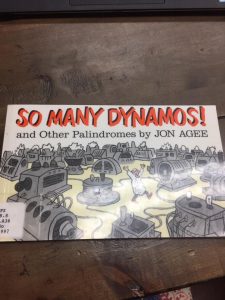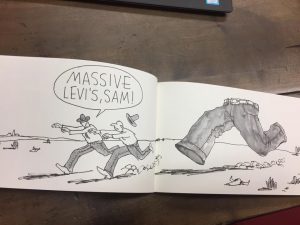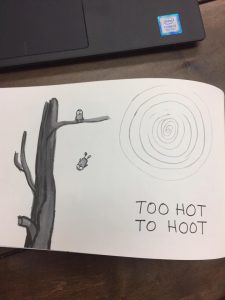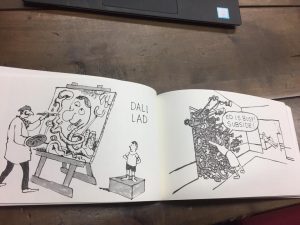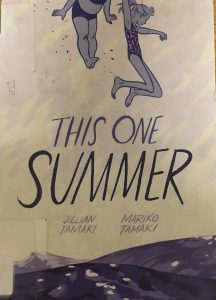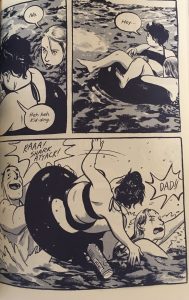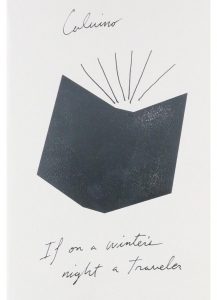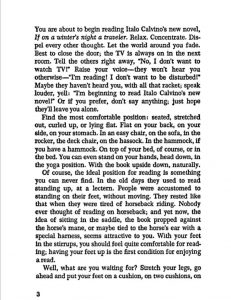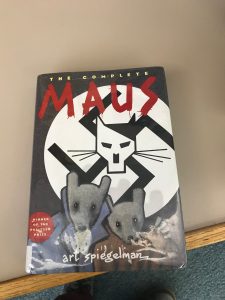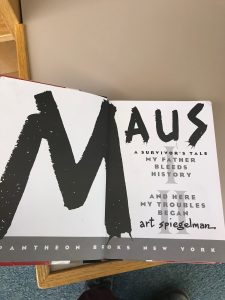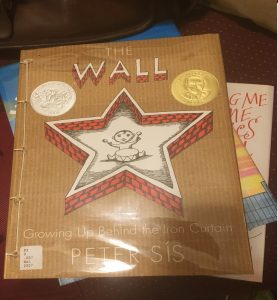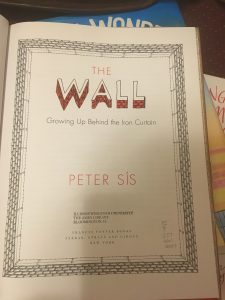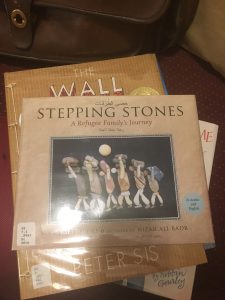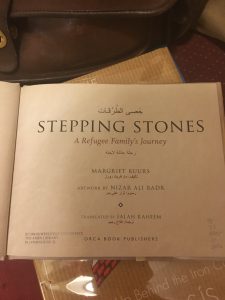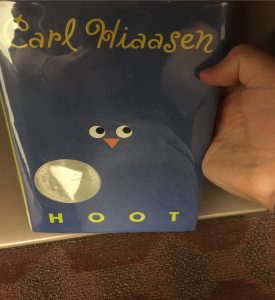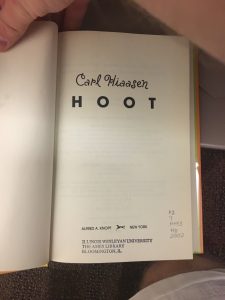Title: So Many Dynamos!
Author: Jon Agee
Illustrator: Jon Agee
Publication/ Year: Sunburst Books, 1994
Number of Pages: 67
Tags/ Themes: 6-8, 8-12, Non-Fiction
Genre: Non Fiction? It’s a list of Palindromes
Descriptive Annotation: This book is made up entirely of funny palindromes and hilarious pictures to illustrate them. On every page is a different palindrome with an image describing the palindrome. For example, one of my favorites is, “No Sir! Away! A papaya war is on!”, with a beautiful image of an epic papaya war going on. This book is certainly not for young readers, and instead contains humor that would be more fitting for older students, probably starting around 7th or 8th grade. (I am not quite sure on this though because some of the palindromes include alcohol, such as “Ron, I’m a minor!” with an image of an older guy trying to buy a little kid a drink. I think that starting around 7th grade they would understand that this is just a funny palindrome, but I don’t think it would really be appropriate for younger students. This book made me crack up and laugh out loud many times.
Classroom Application: I would use this book to help teach students about palindromes! What better way than to use a hilarious book to make kids remember what palindromes are? With the creative drawings and unique phrases I have never heard before, this is a book that is impossible to forget about. After teaching what palindromes were and showing the book, I would challenge the students to come up with one or two creative palindromes of their own and draw their own picture to describe it! Then we could hang them on the wall. I think this would be a super fun activity that would also help solidify the idea of palindromes for them.
Linguistic and Cultural Diversity Analysis: All of the images are drawn with pencil and maybe charcoal, so you can’t really tell different races or portrayals of culture. This book is less for cultural analysis and statement and more about fun with words! Linguistically, this book is brilliant. It turns speech on itself, engaging your mind (wondering, no way is that actually a palindrome), and making you laugh.
Illustration:
